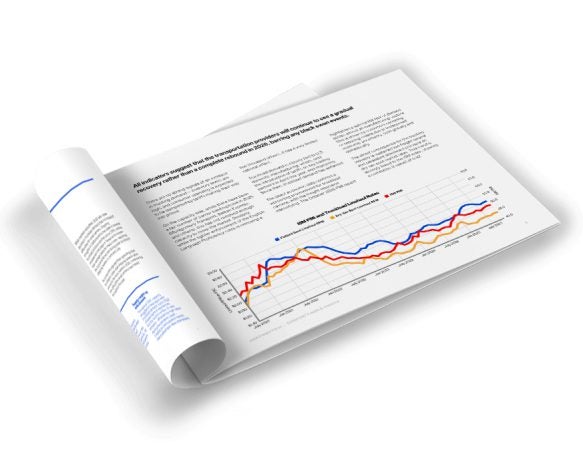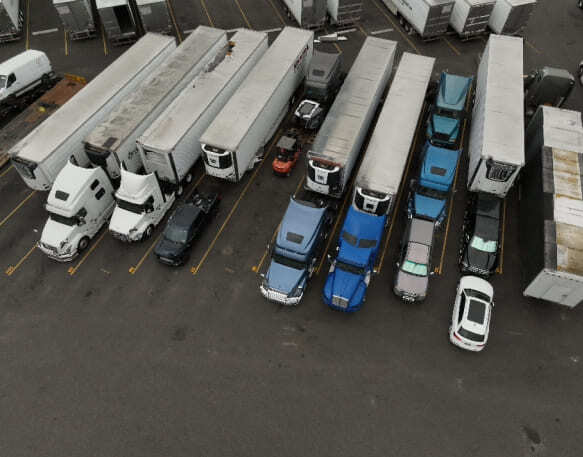Decoding Freight Costs: How to Calculate Freight Class Like A Pro
Shippers and carriers alike often struggle to accurately calculate freight class for their shipments. But for both parties, it’s essential to understand what freight class calculations are and how they work so you can choose the right loads. Freight classes are standardized numerical codes used in the freight shipping industry to categorize shipments, and are sometimes referred to as National Motor Freight Classification (NMFC) codes. These classes are calculated based on the characteristics of the load, such as density, liability, storability, and handling requirements.
Carriers and shippers rely on accurate freight class calculation to ensure fair pricing, efficient utilization of cargo space, and proper handling of goods during transit. This classification system, which typically ranges from Class 50 to Class 500, helps streamline the shipping process, facilitates carrier selection, and contributes to the overall optimization of supply chain logistics.
In this guide, we will demystify the process of calculating freight class and provide guidance and best practices for accurately determining your shipping costs.
Freight class basics: what you need to know
The National Motor Freight Traffic Association (NMFTA) is the nonprofit organization that sets the standards for freight classification. The NMFTA established NMFC codes to define standard rates for carriers transporting goods so fleet managers and cargo recipients alike can be protected from unfair freight rates. This system of standards is widely used by industry stakeholders such as carriers, shippers, and logistics companies to help them determine shipping rates and handling requirements.
As mentioned above, the classification system ranges from Class 50-500, with freight being assessed based on its density, liability, storability, and handling requirements. There are 18 separate classes that exist within the 50-500, and cargo that has a higher freight class will have a higher cost associated with shipping it.
Let’s explore each of the four factors that affect freight classification further:
- Density: Freight density measures how tightly packed cargo is relative to its size and is calculated by dividing its total cubic feet by weight (pounds per cubic foot). For less-than-truckload (LTL) carriers, higher-density cargo is more favorable, because it leads to a lower freight class thanks to the load’s sturdiness and lower risk of damage. Examples of high-density cargo with lower classes include nuts and bolts, bulk ingredients, and car parts. Less dense items like ping-pong balls or kayaks are assigned higher classes due to their bulkiness and susceptibility to damage despite the material type.
- Handling: The ease of handling influences shipping class, with larger or bulky items often placed in higher classes. Examples include large car parts, sofas, and oddly shaped items. Some items, like hazardous materials or fragile electronics, are in higher classes due to special handling requirements. Conversely, easy-to-ship items like those fitting in standard boxes are typically in lower classes due to simpler handling.
- Storability: Freight storability, or stowability, refers to how easily cargo can be packed on a trailer. Favorable items are uniform in shape and size, like boxed nuts or bulk items of similar size. Less favorable items, such as large sofas or irregularly shaped items, are harder to stow, requiring more space and thus higher shipping class and costs.
- Liability: Certain items carry liability risks during transportation. While harmless goods exist, LTL carriers often handle hazardous materials like firecrackers and corrosive substances, classified as low-favorability items under NMFC guidelines due to safety risks. However, it’s not just hazardous materials; non-dangerous items like refrigerated goods also fall into the low-favorability category, potentially having higher freight classes. Conversely, everyday items such as tires, machinery, and furniture pose no danger and are classified in lower shipping classes as they are considered low liability.
Calculation methods
Accurately determining the freight class of a shipment is crucial for pricing, handling, and transportation efficiency. In this section, we’ll break down how to calculate freight class.
- Weigh your Freight: The first step in this process is the simple act of weighing your cargo. Be sure to use an NTEP-certified floor or forklift scale for weighing your load as the certification ensures the scale will provide an accurate and reliable measurement.
- Measure your Freight: Use a tape measure to capture the length and width of your cargo. If your freight is placed on a pallet, use the pallet’s dimensions, as they are usually the widest and longest parts of your shipment. Try to avoid having any part of your cargo hanging off the side of the pallet, as overhanging freight may result in pricing adjustments later on and is more prone to damage during transit due to reduced stability. If your freight isn’t palletized or if overhang is unavoidable, measure the widest, longest, and highest points of your shipment, including any protrusions or packaging that extends beyond the main body of the freight.
- Calculate the Density: Using the measurements you just took, multiply the height, width, and length of your cargo to get the total cubic inches of your shipment. Take that number and divide it by 1,728 (the number of cubic inches in a cubic foot) to get the total cubic feet of your shipment. To calculate the density, divide the weight of your shipment by its cubic feet (or volume).
- Review NMFC Guidelines: Refer to the NMFC guidelines provided by the NMFTA to match your cargo and its weight to the correct freight class. This can help you get an accurate idea of your freight class. While the NMFC chart is meant to be used as an example for carriers who define freight class solely based on density, other types of freight carriers may have different guidelines for determining freight class.
- Document Classification: Document the assigned freight class for the shipment in your shipping and logistics records. This information will be important for quoting accurate shipping rates and ensuring proper handling during transportation.
- Consult An Expert: When in doubt about your freight class, consult with an expert who can confirm the accuracy of your freight classification.
Accurately assessing factors such as weight, dimensions, density, and handling characteristics, helps businesses optimize shipping rates, ensure proper handling during transit, and streamline logistics operations. Utilizing industry guidelines, consulting with experts, and leveraging technology like freight class calculators are all valuable tools that can help in this process.
Factors that can impact freight class
Several key factors play a crucial role in determining the freight class for shipments. Let’s explore them more closely.
Packaging
The way goods are packaged significantly influences their freight class. Items that are properly packaged, compact, and easy to handle often receive lower freight classes. On the other hand, irregularly shaped or poorly packaged items may be assigned higher classes due to increased handling complexity and space requirements.
Density
Freight density is a critical factor in classifying shipments. It refers to how much space the cargo occupies relative to its weight. Higher density often leads to lower freight classes as it indicates efficient use of space and reduced handling challenges.
Special handling requirements
Certain shipments may require special handling due to their nature or characteristics. Items like hazardous materials, fragile goods, perishable items, or oversized cargo may be assigned higher freight classes to account for the additional care, handling procedures, and potential risks associated with transporting them.
Cost implications to be aware of
One reason it’s important to correctly calculate freight class is because it will directly impact the costs associated with transporting your cargo. From shipping rates to impacts on your bottom line, we will explore some of the cost implications associated with different freight classes in this section.
Shipping rates
The freight class directly influences the shipping rates charged by carriers. Generally, lower freight classes correspond to lower shipping rates, while higher classes result in higher rates. This is because lower classes indicate goods that are easier to handle, require less space, and are less likely to incur damage during transit. On the other hand, higher classes imply more complex handling requirements, increased space usage, and potentially higher risks, leading to higher shipping costs.
Carrier selection
Freight class also affects carrier selection. Carriers may specialize in handling certain freight classes or have pricing structures that favor specific classes. Shippers need to consider the freight class of their shipments when selecting carriers to ensure competitive pricing and optimal service levels.
Packaging and handling costs
The packaging and handling costs associated with different freight classes can vary significantly. Lower-class shipments that are easy to handle and require minimal special packaging may incur lower packaging and handling costs. In contrast, higher-class shipments with special handling requirements or fragile items may require additional packaging materials, handling procedures, and potentially incur higher costs.
Supply chain efficiency
If freight shippers misclassify their loads, carriers will then have to reclassify the cargo. This process not only creates delays for your customers, but making carriers reclassify the load wastes time, money, and resources that could have been better spent elsewhere. Accurate classification helps shippers optimize shipping costs, reduce transit times, minimize damage risks, and improve inventory management. This enables better planning and execution of logistics operations, leading to cost savings and enhanced customer satisfaction.
Negotiation and cost management
Understanding the cost implications of freight class empowers shippers to negotiate favorable terms with carriers, manage costs effectively, and make informed decisions regarding packaging, handling, and transportation strategies. It allows for proactive cost management and optimization of logistics expenditure.
With a firm understanding of where your freight lands, shippers and carriers can optimize costs, improve service levels, and maintain their competitiveness in the market. For even deeper insights, tools like DAT iQ Benchmark can be incredibly useful. By benchmarking your rates against similar shippers in the market, DAT iQ Benchmark helps identify optimization opportunities and provides a more detailed understanding of your competitive positioning. The advanced AI-powered rate engine and custom data manipulation capabilities ensure that you get the most relevant insights to enhance your cost management strategies.
Common mistakes to avoid
As with taking on any new skill, there’s a learning curve associated with mastering the freight classification system. Between shifting regulations and reclassifications, it can be difficult to get it right. In this section, we’ll provide you with tips to help you prevent errors when looking to calculate freight class.
- Accurate Measurements: Ensure precise measurements of weight, dimensions, and density for each shipment. Use calibrated scales and measuring tools to avoid inaccuracies that can lead to incorrect freight class assignments.
- Consult NMFC Guidelines: Refer to the NMFC guidelines provided by the NMFTA for accurate classification criteria. Familiarize yourself with the specific descriptions and requirements for different commodities to avoid misclassification errors.
- Consider Packaging: Evaluate the packaging of the goods carefully. Properly packaged items that are easy to handle and stow are typically assigned lower freight classes. Avoid overlooking the impact of packaging on freight class determination.
- Understand Special Handling Requirements: Be aware of any special handling requirements for certain items, such as hazardous materials, fragile goods, or oversized cargo. Assign appropriate freight classes based on these requirements to ensure accurate classification.
- Review Carrier Guidelines: Familiarize yourself with the classification guidelines and pricing structures of carriers you work with. Some carriers may have their own criteria for determining freight class, so understanding their requirements can help prevent errors.
- Use Technology and Tools: If you’re unsure of your calculation abilities, freight class calculators, software, or online resources can assist with determining the correct freight class. These tools can streamline the classification process and reduce the likelihood of manual errors.
- Regular Training and Education: Provide training and education to employees involved in freight class calculation. Ensure they understand the classification criteria, guidelines, and importance of accurate classification in shipping operations.
- Double-Check Class Assignments: Before finalizing freight class assignments, double-check the measurements, documentation, and classification criteria to catch any potential errors or discrepancies.
Empowering decision-making with DAT iQ RateView and load board integration
While freight classification can be complex, tools like DAT iQ RateView are invaluable for those seeking to optimize their shipping strategies. RateView provides detailed rate insights for LTL shipments, informed by data from $1 trillion worth of annual transactions. This helps shippers and brokers navigate market volatility by offering data on past, present, and future rates based on industry trends. While we do not offer freight classification lookups or insights, RateView assists shippers by keeping them informed about truckload rates relevant to their shipments, enabling better cost management.
For carriers, RateView supports cost management by providing current market rates, which help calculate surcharges and margins effectively. By integrating with DAT One load board, users can find the right load for their truck at the optimal time. DAT One’s extensive network, with over 267 million loads and trucks posted annually, ensures that carriers, shippers, and brokers have access to the best opportunities tailored to their needs.
Streamlining Freight Class Determination with DAT RateView
While the process of calculating your freight class can be dispiriting for some, shippers and carriers can accurately determine their freight class with help from DAT iQ RateView. Backed by $1 trillion in annual transactions, RateView offers real-time market rates to help shippers manage costs and carriers protect their bottom line, no matter the freight class. Coupled with the wide variety of load and truck postings on the DAT One load board, you’ll find the perfect match for your freight at the perfect time for your freight class.




